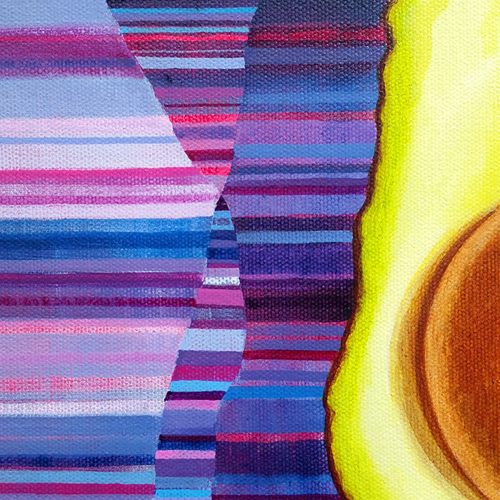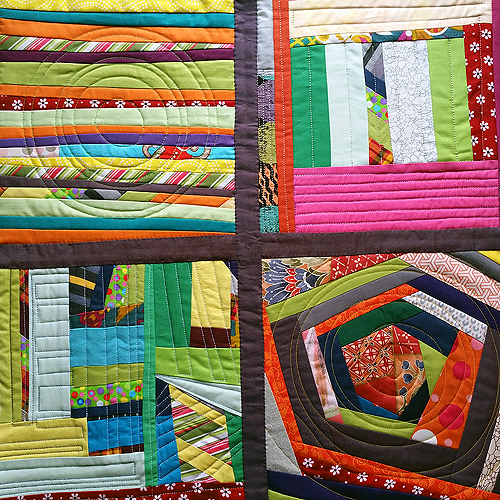 This post first appeared on my Patreon page. Join today to see everything first!
This post first appeared on my Patreon page. Join today to see everything first!
"Whatever happened to Spweet?* Are they still aggregating Kuhfwangles?"
"No, they pivoted."
In the tech startup world, pivoting is "a structured course correction designed to test a new fundamental hypothesis about the product, strategy, and engine of growth." (source)
Or to paraphrase Steve Blank: Fire the plan, not the CEO.
I painted so hard in 2016. And 2015, and 2014, and on back. I love the paintings I painted. But I'm tired of painting.
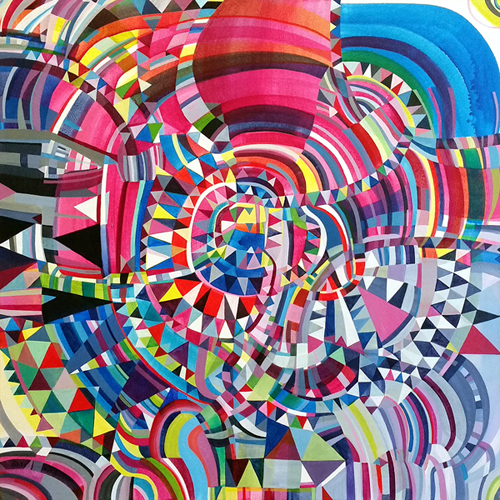 They Grow Around Roads. Acrylic on canvas, 24 x 24 inches, 2015 by Sarah Atlee. Available at Ro2 Art.
They Grow Around Roads. Acrylic on canvas, 24 x 24 inches, 2015 by Sarah Atlee. Available at Ro2 Art.
I've been a painter for 20 years. It's been my pastime, my course of study, my profession, and a big part of my identity. It's been easy to answer the question,
"So, what kind of art do you do?"
Well, that's a good question. Right now, I'm not interested in making paintings. So how can I tell people I'm a painter? You know what I'm doing now? I make quilts.
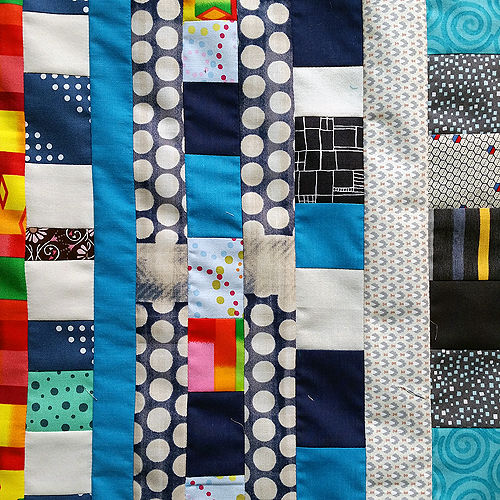
Why Make Quilts?
Quilts inhabit an interesting space between two and three dimensions, comprising both image and object.
Quilts are largely functional works of art, meant to be touched, used, and worn over time. I make quilts that should be used - no hands-off museum mentality here.
Across cultures worldwide, quilts are created to mark time and record history, both public and private. We make quilts to commemorate birth, marriage, transition, sickness, even death. A quilt can simultaneously signify the history of one person and an entire people.
Quilts are a way to make old materials new again. They embody the age-old practice of making do, ever more relevant in our consumer culture.
Are quilts art? The debate plods along. I have the opportunity to expand the conversation about “craft” or “functional art” in “fine art” spaces. As one educated in the traditional art school system, making quilts feels at once radical and yet completely appropriate. Of course quilts are art!
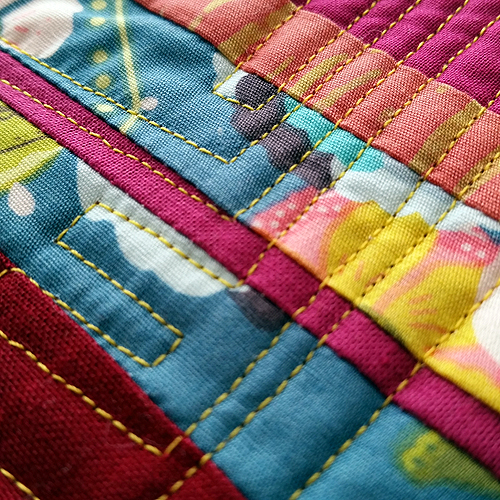
Have I hung up my paintbrushes for good? Certainly not. I need some time to create in this other vein. I think I will return to painting through some side door that I can't see just now. It's going to take new practices and strategies to continue my art business with this new hat on. I'm definitely up for the challenge.
So now, when someone asks, "What kind of art do you do?" I tell them: I make quilts.
I'm a quilter, y'all.
* Okay, you would not believe how many nonsense words I auditioned for this sentence, but it turns out they are already in use, most of them as tech startups. Rejected words include: sploof, tweenge, treeve, alboo, florp, gloove, traeve, fween, spang, splot, ofen, crangle...




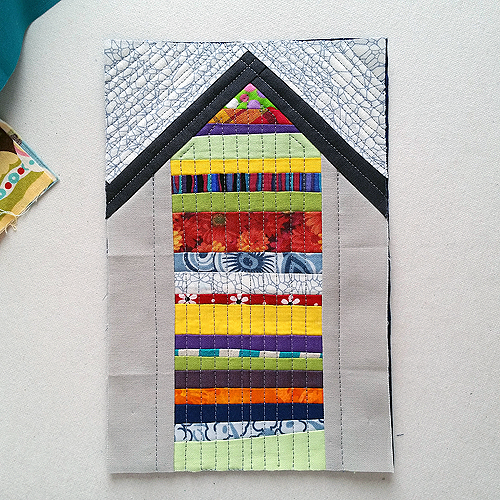





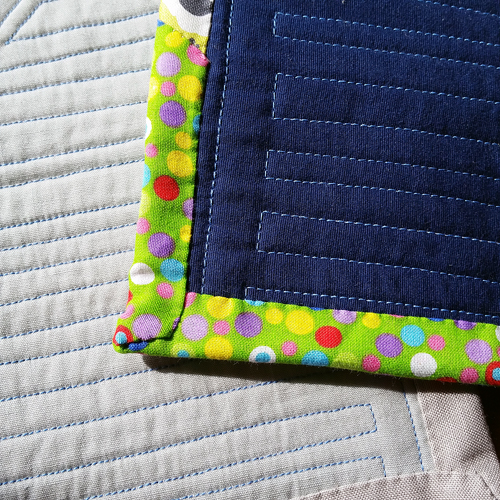
 This post first appeared
This post first appeared  They Grow Around Roads. Acrylic on canvas, 24 x 24 inches, 2015 by Sarah Atlee.
They Grow Around Roads. Acrylic on canvas, 24 x 24 inches, 2015 by Sarah Atlee. 

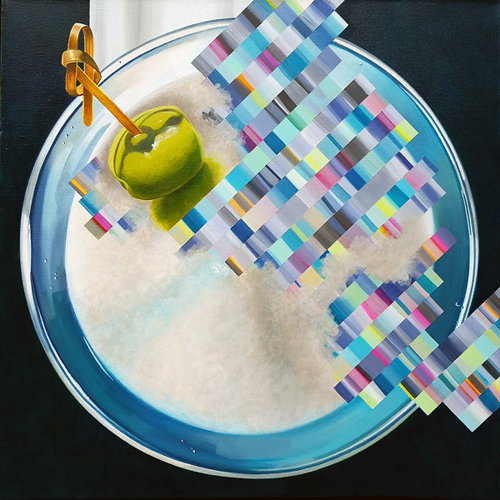 Martini: Head Clog II. Acrylic on canvas, 24 x 24 inches, 2016 by Sarah Atlee. $1,080
For purchase inquiries, contact
Martini: Head Clog II. Acrylic on canvas, 24 x 24 inches, 2016 by Sarah Atlee. $1,080
For purchase inquiries, contact 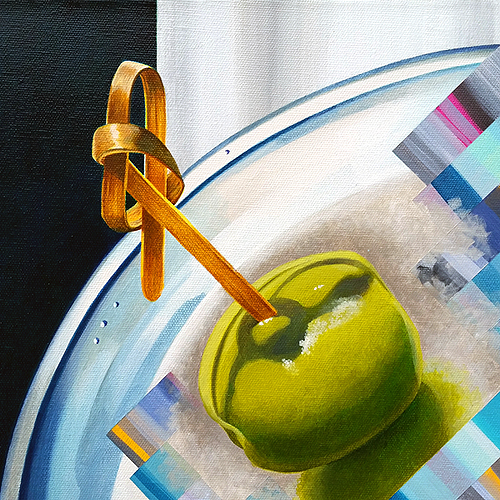 Martini: Head Clog II (Detail view 1). Acrylic on canvas, 24 x 24 inches, 2016 by Sarah Atlee.
Martini: Head Clog II (Detail view 1). Acrylic on canvas, 24 x 24 inches, 2016 by Sarah Atlee.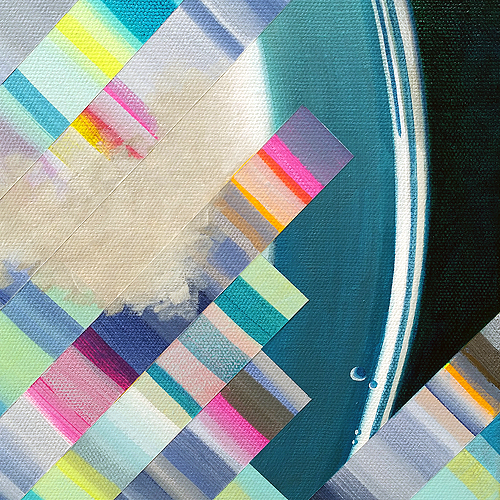 Martini: Head Clog II (Detail view 2). Acrylic on canvas, 24 x 24 inches, 2016 by Sarah Atlee.
Martini: Head Clog II (Detail view 2). Acrylic on canvas, 24 x 24 inches, 2016 by Sarah Atlee.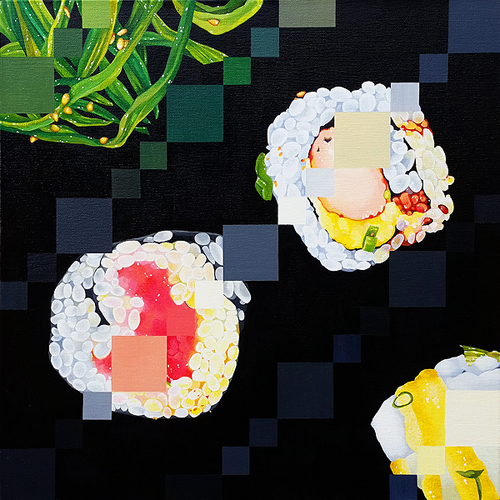 Sushi Sampler. Acrylic on canvas, 24 x 24 inches, 2016 by Sarah Atlee. $910
For purchase inquiries, contact
Sushi Sampler. Acrylic on canvas, 24 x 24 inches, 2016 by Sarah Atlee. $910
For purchase inquiries, contact 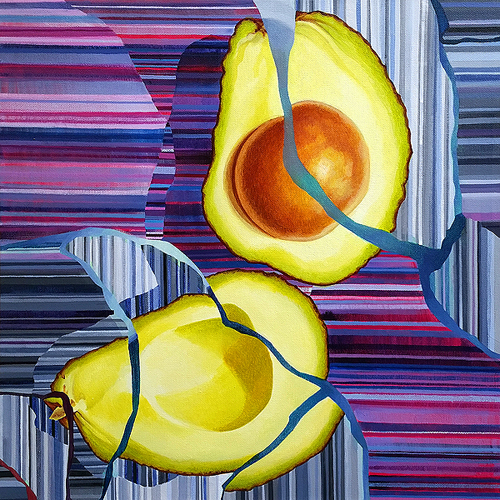 Avocado: Cracked
Acrylic on canvas, 18 x 18 inches, 2016 by Sarah Atlee. $910
For purchase inquiries, contact
Avocado: Cracked
Acrylic on canvas, 18 x 18 inches, 2016 by Sarah Atlee. $910
For purchase inquiries, contact 